The Elimination of Whiskers from Electroplated Tin
When RoHS lead-free regulations began to take hold globally, tin and its alloys were the first choice as alternatives to eutectic tin/lead. On the solder side, the transition to using these alternatives has moved forward, but on the surface finish side, replacing tin/lead has posed greater challenges. This paper discusses two approaches to dissipating the internal stresses in and external stresses on the deposit that are known to initiate whisker formation.
A printable PDF version of this paper is available by clicking HERE.
By Masanobu Tsujimoto, Shigeo Hashimoto, Masayuki Kiso, Raihei Ikumoto, Toshikazu Kano and Genki Kanamori, C. Uyemura & Co. Ltd. (Japan); and Don Gudeczauskas and George Milad, C. Uyemura & Co. Ltd. (USA)
ABSTRACT
As RoHS lead-free regulations began to take hold globally, tin and its alloys were the first choice as an alternative to eutectic tin/lead. On the solder side, the transition has moved forward and solutions have been implemented, such as the Sn-Ag-Cu (SAC) family of lead-free (LF) solders, for paste reflow and tin/copper for hot air solder leveling (HASL). The industry is constantly making progress adapting its materials and processes to the higher reflow temperature profile for these LF solders. Today there is a much better understanding of the nature of the intermetallic (IMC) bond as well as the reliability of LF solder joint.
On the surface finish side, replacing tin/lead has posed greater challenges. Component leads and connector finishes were being converted to tin as an obvious alternative. This works well as a soldering surface. However, any part of the lead or the connection surface that is not soldered to has shown a tendency to form tin whiskers over the life of the part. Internal stresses in the deposit due to IMC formation or external stresses on the deposit are known to initiate whisker formation.
In this paper two approaches are implemented to dissipate the stress that is formed. The first is to modify the substrate surface to control the growth in thickness and direction of propagation of the IMC. The second is to modify the large columnar tin deposit crystal structure to mimic the fine equiaxed structure of tin/lead solder. The former is achieved thru controlled micro-roughening of the substrate and the latter by the use of additives to the plating bath. Data will be presented to show that by implementing these two modifications, the stress causing tin whiskers is dissipated and tin whisker formation is inhibited.
Keywords: tin whisker inhibition, tin/lead solder replacement
Introduction
Electroplated pure tin and tin-based alloys are being used as alternatives to tin/lead in the majority of electronic components. These alternatives are known to produce tin whiskers resulting in short circuits on these components.
In the case of a tin finish on copper and copper-based alloys, the major cause of tin whisker formation is compressive stress. The stress is mainly caused by irregular growth of a copper-tin intermetallic compound (IMC) at ambient conditions.
It is known that tin whiskers are readily formed on electroplated tin deposits on copper and are not observed on electroplated tin/lead deposits. The crystal structures of tin and tin-lead deposits are different. The crystal structure has a direct impact on tin whisker formation.
A tin deposit with a modified crystal structure (similar to tin-lead deposits) is capable of preventing whisker formation by dissipating and delocalizing the stress that cause whiskers.
As shown in Fig. 1, stress, channeled along the boundaries of the large grained columnar tin deposit, is responsible for the emergence of tin whiskers. Stress may be internal or external (Fig. 2). The primary source of internal stress is attributed to the non-uniform increase in the thickness of the IMC layer over time at ambient conditions (30°C, 60%RH for 4000 hr). Another condition that produces internal stress is exposure to high temperature and high humidity (55°C, 85%RH for 4,000 hr) for extended periods of time, which gives rise to oxidation and/or corrosion. Internal stress could also be induced by thermal cycling (-55°C to 85°C, 1500 cycles) due to mismatched coefficients of thermal expansion. The latter two forms are commonly used to induce internal stress in controlled experiments. External stress is also known to initiate whisker growth. An example is the stress induced by press fit connectors.

Figure 1 - Schematic diagram of tin whisker formation.
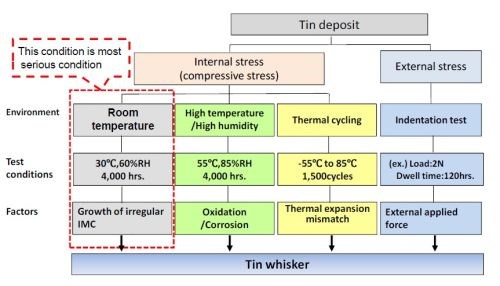
Figure 2 - Four different paths leading to stress and whisker formation.
The approach taken in this study is to control the thickness of the IMC, as well as modifying the crystal structure of the tin deposit from a large-grained columnar to a small-grained equiaxed structure. The former is achieved by increasing the area of the copper substrate, through chemical micro-roughening. The grain structure is altered by the use of specific chemical additives to the plating bath. All testing was done under ambient conditions noted above.
Copper Surface Modification
A study was conducted on the morphology of the copper substrate prior to plating. The test vehicle was a CDA-19400 lead frame (Cu-2.3 Fe-0.03 P-0.12 Zn) (Fig. 3). A series of substrates varying in roughness were evaluated for whisker formation after electroplated tin deposition. The roughness was controlled by chemical etching procedures. Average roughness Ra, varied between 0.13 to 0.47 µm. As shown in Fig. 4, an Ra value of 0.47 µm has a much larger surface area as compared to an Ra value of 0.13 µm. The propensity to whisker was evaluated as follows:
Tin Plating
The plating bath was methane sulfonic acid (MSA)-based matte tin. The plating was run at a current density of 10A/dm2. The plating time was varied to produce a 3-µm and a 10-µm thick deposit. The former was for short term whisker evaluation and the latter, which is typical of lead frame plating, was used for long term evaluations.

Figure 3 - Test vehicle.
Methodology
The test vehicles were subjected to chemical micro-roughening to produce a set of specific Ra values (Fig. 4). The figure shows the SEM micrographs of the different degrees of micro-roughening (Ra), as measured in µm.
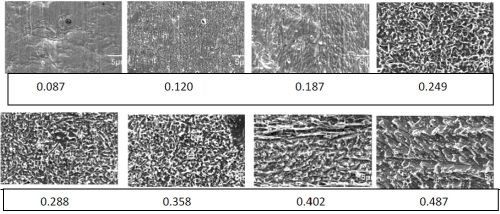
Figure 4 - SEM micrographs of different Ra values.
The samples were then run thru a standard plating process as outlined in Fig. 5. The samples were then stored under controlled ambient conditions (30°C, 60%RH) for extended periods of time (1,000 hrs). The samples were examined for whisker formation at various time intervals.

Figure 5 - The plating process sequence used for this study.
Definition of a “whisker”
A whisker is a protrusion that is >10 µm in length and that has an aspect ratio >2.
Measurement of whisker length
The measurement according to JEITA ET-7410 is the straight line distance from the point of emergence of the whisker to the most distant point on the whisker.
Results and Discussion
The whiskers were examined, measured and tabulated after 1000 hr of storage under controlled ambient conditions (30°C, 60%RH). The data gathered from whisker examination on the various morphologies of roughening are plotted in Figs. 6 and 7. Figure 6 a plot of maximum whisker length as a function of roughness. Figure 7 shows the whisker density per mm2 as a function of roughness. The data clearly indicates that there is clear correlation between surface roughness and whisker propensity. The rougher surface produces lower whisker length and also lower density per mm2.
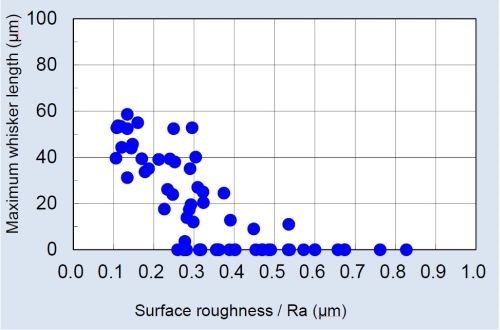
Figure 6 - Maximum whisker length vs. surface roughness.
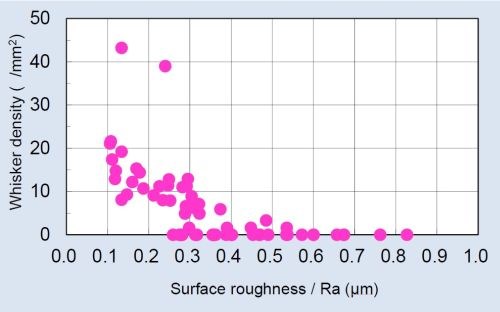
Figure 7 - Whisker density vs. surface roughness.
Figure 8 shows whisker growth on 3 µm of tin plated on smoother copper (Ra = 0.13 µm) as compared to no whiskers on the rougher surface (Ra = 0.47 µm).

Ra = 0.13 µm, whiskers Ra = 0.47 µm, no whiskers
Figure 8 - 3-µm tin deposit after 1,000 hrs at 30°C, 60%RH.
In an effort to explain this, more work was done. The reflowed/soldered layer on 10 µm of tin samples, that were stored for 7,000 hrs at 30°C, 60%RH, was stripped by chemical means and the intermetallic (IMC) morphology was examined. In addition, cross sections were prepared and examined to verify the top down observation.
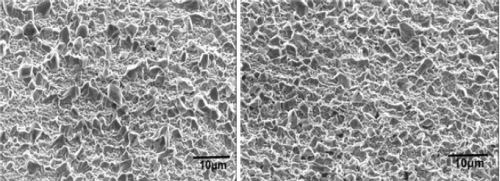
Ra = 0.13 µm Ra = 0.47 µm
Figure 9 - Morphology of the IMC surface after tin stripping.
Figure 9 shows the top view of the IMC after tin stripping for the two extremes of Ra, namely Ra = 0.13 µm and Ra = 0.47 µm. Figure 10 shows cross-sections of the same Ra values. It is clear that the rougher Ra of 0.47 µm produced a thinner, more uniform IMC, compared to the smoother Ra of 0.13 µm, which showed increased IMC thickness in localized areas. A plausible explanation is that the IMC is spread over a much larger area on the rougher morphology (Ra = 0.47 µm) as compared to the smaller area of the smoother surface (Ra = 0.13 µm). It follows then that the stress resulting from IMC formation would be highly reduced and dissipated with increased surface roughness of the underlying copper substrate.

Ra = 0.13 µm Ra = 0.47 µm
Figure 10 - Cross section showing the IMC after tin stripping.
The solderability and the ductility of a 10-µm tin deposit on the two extremes of surface roughness were examined using “Wetting Balance Testing” as well as the “Bend Test.” There was virtually no difference in performance as seen in Fig. 11.
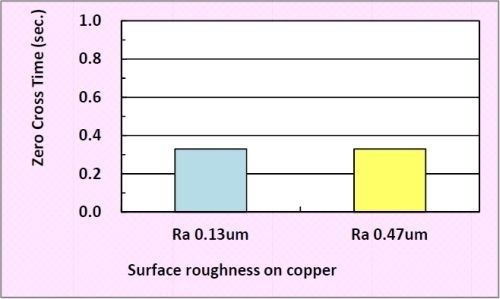
Figure 11 - Comparison of zero cross time of 10-µm tin deposits for two levels of roughness.
Modifying the Crystal Structure of the Tin Deposit
A close examination of the crystal structure of both tin and Sn/Pb alloy shows a clear difference between the two deposits. The Sn/Pb which does not whisker has an equiaxed, relatively fine-grained deposit. The tin on the other hand shows larger columnar crystals. Figure 12 shows the difference in crystal structure between tin and eutectic Sn/Pb alloy.
It is believed that, if the crystal structure of the tin deposit can be modified to the Sn/Pb crystal structure, the stresses will be dissipated and whiskers will not form. Tests were conducted using the same test vehicle and the same plating conditions as outlined earlier in the copper surface roughness study.
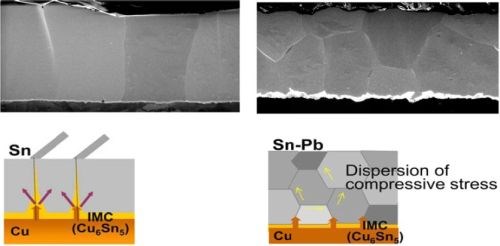
Figure 12 - SEM and schematics of the tin vs. the Sn/Pb deposit structures.
Three types of tin deposits were produced by the use of specific plating additives to the bath. Type A is a standard tin deposit characterized by large columnar crystals, type B was modified to produce smaller columnar grain structure and type C was further modified to produce a still smaller grain that is both columnar as well as equiaxed, almost mimicking the Sn/Pb structure. The SEM results are shown in Fig. 13.
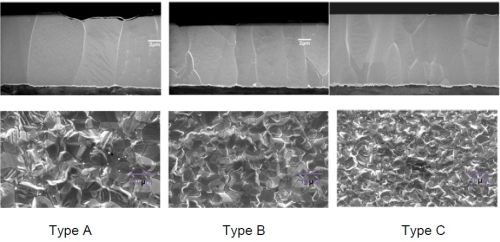
Figure 13 - SEM photos of the cross-section and surface morphology in the three types of tin deposits.
All three types were plated to the typical thickness of 10 µm (the thickness typical of lead frames) and were placed in an ambient environment (30°C, 60%RH) for 4000 hrs. Figure 14(a) shows that relatively long whiskers developed on the Type A tin deposit. Figure 14(b) shows whiskers that were shorter than those of type A developed. Figure 14(c) shows no whisker formation with the type C crystal structure stored under the same conditions. Figure 15 shows a graph depicting the length of whisker versus storage time for the three tin deposit crystal types.

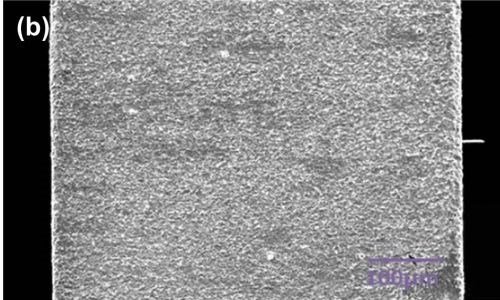
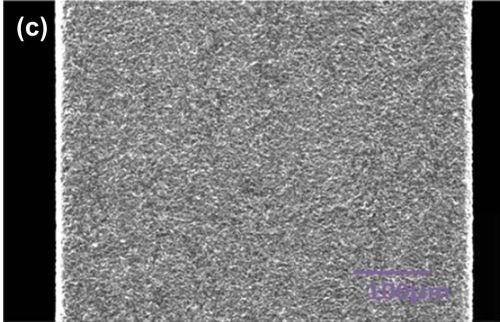
Figure 14 - The surface morphology of the three types of tin deposits after 4,000 hrs of exposure in an ambient environment (30°C, 60%RH): (top) Type A, whiskers (long); (middle) Type B, whiskers (short); (bottom) Type C, no whiskers.
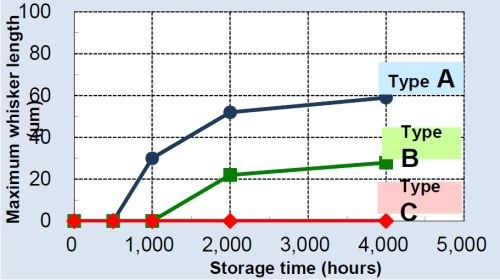
Figure 15 - Storage time vs. maximum whisker length for the three types of tin structures.
Combining the Results to Produce a Whisker-free System
Figure 16 is the result of combining the rough copper structure (Ra = 0.45 µm) with the fine-grained equiaxed crystal structure achieved by modifying the plating bath with specific types of additives. The result is a very controlled, evenly distributed and relatively thin IMC producing minimum stress. The equiaxed crystal structure dissipates the reduced stress, resulting in no whisker formation. This combination produced no whiskers after 22,000 hr.

Figure 16 - SEM of a cross-section of the combination of the rough copper structure with the fine-grained equiaxed crystal structure and a graphic presentation of same.
Conclusions
- Tin deposits on rough copper (higher Ra values) reduced whisker formation under ambient conditions. Rougher copper forms a uniform IMC layer, and prevents the localization of internal stress.
- Compared with large grain size tin deposits, tin deposits having a small grain size reduced tin whisker formation under ambient conditions.
- Tin deposits having a crystal structure similar to that of a tin-lead deposit effectively restrained tin whisker formation.
- The crystal structure in tin deposits is one of the most important factors in restraining tin whiskers.
Related Content
An Overview of Electroless Nickel Plating
By definition, electroless plating is metal deposition by a controlled chemical reaction.
Read MoreTrivalent Chrome Overview
As the finishing industry begins to move away from the use of hexavalent chromium to trivalent chromium, what factors should finishers consider as they make new investments? Mark Schario, chief technology officer for Columbia Chemical offers a helpful overview of this complicated topic.
Read MoreInnovation in Plating on Plastic
Plating on advanced plastics solution offers improved adhesion, temperature resistance and cost savings.
Read MoreProducts Finishing Reveals 2024 Qualifying Top Shops
PF reveals the qualifying shops in its annual Top Shops Benchmarking Survey — a program designed to offer shops insights into their overall performance in the industry.
Read MoreRead Next
A ‘Clean’ Agenda Offers Unique Presentations in Chicago
The 2024 Parts Cleaning Conference, co-located with the International Manufacturing Technology Show, includes presentations by several speakers who are new to the conference and topics that have not been covered in past editions of this event.
Read MoreEpisode 45: An Interview with Chandler Mancuso, MacDermid Envio Solutions
Chandler Mancuso, technical director with MacDermid Envio discusses updating your wastewater treatment system and implementing materials recycling solutions to increase efficiencies, control costs and reduce environmental impact.
Read MoreDelivering Increased Benefits to Greenhouse Films
Baystar's Borstar technology is helping customers deliver better, more reliable production methods to greenhouse agriculture.
Read More




















.jpg;maxWidth=300;quality=90)









